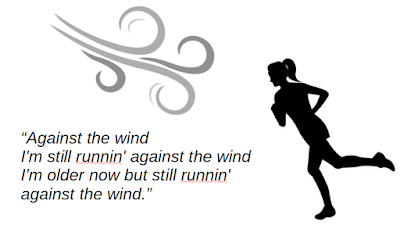One of my favorite books is Fahrenheit 451 by Ray Bradbury but three years before he wrote what many consider his finest work, Bradbury also wrote one of my favorite short stories, The Pedestrian. It was the inspiration for Fahrenheit 451.
“In the introduction to the graphic novel adaptation of Fahrenheit 451, Mr. Bradbury explained the origins of this short story by describing an experience when he and his friend were stopped in 1950 by a police officer.
‘ …In the evening we were walking along Wilshire boulevard when a police car stopped and an officer got out and asked us what we were doing.
‘Putting one foot in front of the other’, I said, not very helpfully.’
On this night, however, Mead meets a robotic police car—the only one left in the city, since crime is virtually nonexistent due to the incessant television viewing. A roaming public that is out walking is much harder to control than one that is glued in front of their television sets. So the police car is programmed to stop Mr. Mead, even though he is not engaging in criminal activity.
The police car interrogates Mead, trying to discover why he is out walking.
“Business or profession?”
“I guess you’d call me a writer.”
“No profession,” said the police car as if talking to itself.
There is no room for human discretion and judgment in a world that is fully automated. The interaction rapidly goes downhill as the interrogation reveals that Mead doesn’t own a television, he is unmarried, lives alone, and he is a writer in a society that doesn’t value the written word. He is “suspicious” and treated as a criminal because of who he is – a nonconformist.
The police car then orders Mead get in. “Wait a minute, I haven’t done anything! - I protest!” says Mead. But he eventually complies and asks, “Where are you taking me?”
After rereading The Pedestrian, I went for a walk. I thought about my neighbor who runs alone in the pre-dawn hours. He always wears sweatpants, sweatshirt, and a wool cap year-round - regardless of how hot it is. He definitely does not conform to society’s expectation of a “runner.” Does he have “regressive tendencies?” Is he “suspicious?”
Then I remembered another pedestrian, Elijah McClain. On an August evening in 2019 he was walking in the dark, wearing a ski mask, and moving his arms in time to the music playing on his ear buds. Elijah was walking home from a convenience store after purchasing a bottle of ice tea for his brother, when someone called 911, saying he “looked sketchy.”
Elijah was stopped by police. He told them he was walking home and that he had a right to walk home. From there, the interaction spiraled from “suspicious” to “criminal.” The officers tackled him and restrained him with a choke hold. Elijah said, “I am an introvert, please respect the boundaries that I am speaking. Leave me alone.” 3
1. In the U.S. Supreme Court case Terry v. Ohio, the majority opinion upheld a police officer’s right to stop an individual on the street if the officer has a “reasonable suspicion” that the individual is engaged in criminal activity.
So … Is walking at night engaging in “criminal activity?” Is the mere fact that a pedestrian is perceived by an onlooker as “sketchy” reasonable suspicion to make a stop? Or is it some personal aspect – profession, attire, skin color, etc. -of the pedestrian that creates “reasonable suspicion?”
1. https://genius.com/Ray-bradbury-the-pedestrian-annotated
2. Bradbury, Ray. The Golden Apples of the Sun. "The Pedestrian," pp. 9-13. With Drawings by Joe Mugnaini. Hart-Davis, 1953.
3. https://www.nytimes.com/article/who-was-elijah-mcclain.html
4. https://www.thecut.com/2021/02/the-killing-of-elijah-mcclain-everything-we-know.html
















